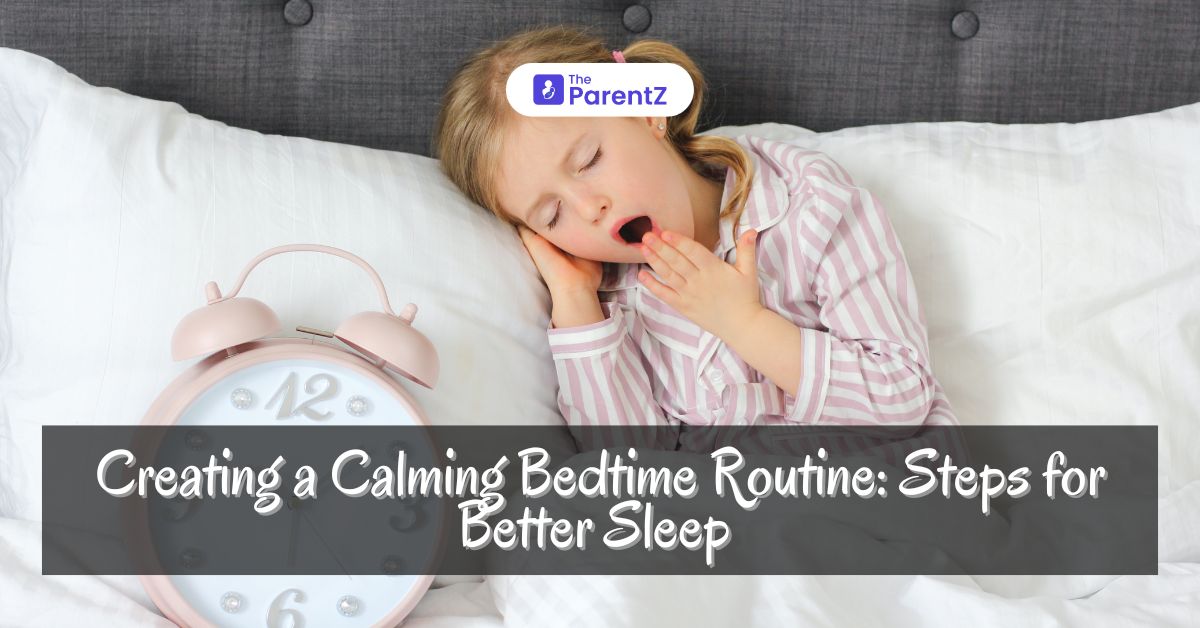Establishing a calming bedtime routine is essential for children, especially for kids and infants. Good sleep habits can enhance their overall well-being, aid in growth and development, and improve mood and behavior. This article outlines effective steps to create a soothing bedtime routine for your child, ensuring they get the restful sleep they need.
Introduction: The Importance of a Calming Bedtime Routine
A peaceful bedtime routine can make a significant difference in the quality of sleep for kids and infants. It sets the stage for a good night’s rest by helping them relax and transition from the day’s activities to sleep. A consistent routine can also reduce bedtime resistance and nighttime awakenings, leading to healthier sleep patterns.
Step 1: Establish a Consistent Bedtime
Consistency is key when it comes to bedtime. Setting a specific time for bed helps regulate your child’s internal clock. Here’s how to establish a consistent bedtime:
- Set a specific bedtime: Choose a bedtime that allows for sufficient sleep based on your child’s age.
- Stick to the schedule: Maintain the same bedtime every night, even on weekends.
- Gradual adjustments: If changing bedtime, do so gradually by 15-minute increments.
Step 2: Create a Pre-Bedtime Routine
A pre-bedtime routine signals to your child that it’s time to wind down. This routine should start about 30-60 minutes before bedtime and can include:
- Bath time: A warm bath can relax muscles and prepare the body for sleep.
- Brush teeth: Encourage good dental hygiene as part of the routine.
- Put on pajamas: Comfortable sleepwear is important for a good night’s sleep.
Step 3: Calm Activities Before Bed
Incorporate calming activities that help your child relax and transition to sleep mode. Some effective options are:
- Reading: Choose a soothing story or a favorite book.
- Listening to calming music: Soft, instrumental music can create a tranquil environment.
- Gentle stretches or yoga: Simple stretches can help release tension in the body.
Step 4: Create a Sleep-Inducing Environment
The sleep environment plays a crucial role in how well your child sleeps. Ensure their bedroom is conducive to sleep by:
- Dimming the lights: Use low-wattage bulbs or a nightlight to create a serene atmosphere.
- Reducing noise: Use white noise machines or fans to mask disruptive sounds.
- Keeping the room cool: Maintain a comfortable room temperature, ideally between 60-67°F (15-19°C).
Step 5: Limit Screen Time Before Bed
Screens emit blue light, which can interfere with the production of melatonin, the sleep hormone. To minimize this effect:
- Turn off screens: Cease the use of electronic devices at least an hour before bedtime.
- Encourage other activities: Promote reading, drawing, or playing with non-electronic toys instead.
Step 6: Offer a Comfort Object
For young children, a comfort object such as a stuffed animal or a blanket can provide a sense of security and comfort, helping them feel safe and relaxed as they drift off to sleep.
Step 7: Practice Relaxation Techniques
Incorporating relaxation techniques can further ease your child into sleep. Some methods include:
- Deep breathing exercises: Teach your child to take slow, deep breaths to calm their mind and body.
- Guided imagery: Encourage them to imagine a peaceful scene or a favorite place.
Step 8: Address Nighttime Fears
It’s common for children to have fears or anxieties about the dark or being alone at night. Address these fears by:
- Listening and comforting: Acknowledge their fears and provide reassurance.
- Nightlights and security items: Use nightlights or allow them to have a favorite toy or blanket for comfort.
Step 9: Monitor Diet and Exercise
Diet and physical activity can significantly impact sleep quality. Ensure your child:
- Eats balanced meals: Avoid heavy meals close to bedtime.
- Limits caffeine: Steer clear of caffeinated beverages and snacks.
- Gets regular exercise: Encourage daily physical activity but avoid vigorous exercise close to bedtime.
Step 10: Be Patient and Consistent
Building a new bedtime routine takes time and patience. Be consistent with the steps and make adjustments as needed to find what works best for your child. Remember, every child is unique, and what works for one may not work for another.
Conclusion
A calming bedtime routine is essential for promoting better sleep in kids and infants. By following these steps, you can help your child establish healthy sleep habits that will benefit them throughout their lives. Consistency, a soothing environment, and relaxation techniques are key components in creating a successful bedtime routine. Prioritize sleep, and your child will reap the rewards of better rest and improved well-being








Be the first one to comment on this story.